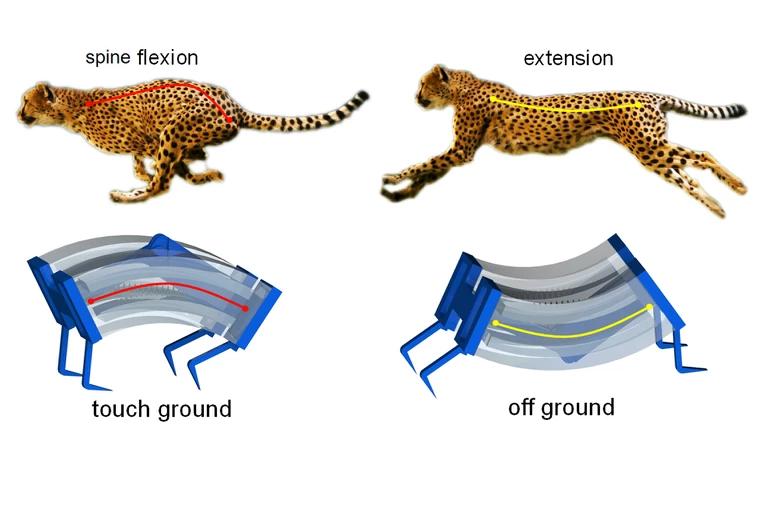When we think of soft-bodied robots, we tend to picture things that slowly crawl like caterpillars. A new one is able to move much quicker, though, by leaping like a cheetah.
The world's fastest land animal, cheetahs run by rapidly flexing their spines between two stable states. A consortium of American scientists recently set out to replicate that motion in a soft robot. The resulting device is known as LEAP, which stands for "Leveraging Elastic instabilities for Amplified Performance."
Instead of muscles and a biological spine, the silicone-bodied robot incorporates two soft pneumatic actuators and a flexible spring-loaded mechanical spine. Alternately pumping air in and out of the two actuators causes energy to be stored and suddenly released, triggering the spring to instantly flex the spine from one stable state to another. As a result, the bot is able to exert force against the ground, leaping off of it.
Utilizing this technique, LEAP is able to gallop at a rate of up to 2.7 body lengths per second across flat, solid surfaces. Alternatively, if equipped with a fin, it can swim at a maximum speed of 0.78 body lengths per second. By contrast, the fastest traditional soft robots reportedly top out at 0.8 on land and 0.7 when swimming.
The team has in fact created several of the small robots, each one measuring about 7 cm long (2.8 in) and weighing around 45 grams (1.6 oz). Working together, multiple bots are able to move up against an item from all sides, then lift it off the ground by extending their spines in unison.
"Potential applications include search and rescue technologies, where speed is essential, and industrial manufacturing robotics," says North Carolina State University's Asst. Prof. Jie Yin. "For example, imagine production line robotics that are faster, but still capable of handling fragile objects."
A paper on the research – which also involved scientists from Temple University, Colorado State University, and The City University of New York – was recently published in the journal Science Advances.
A LEAP robot can be seen in action, in the following video.
Source: North Carolina State University




